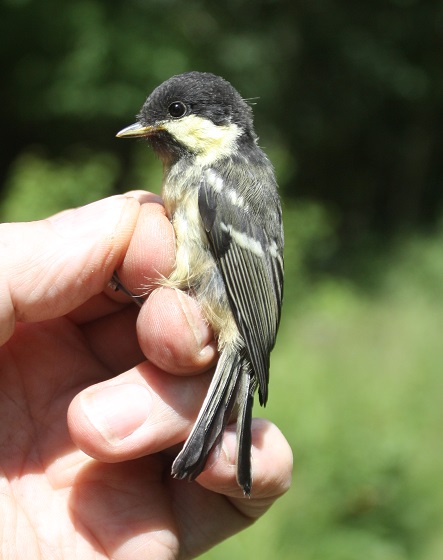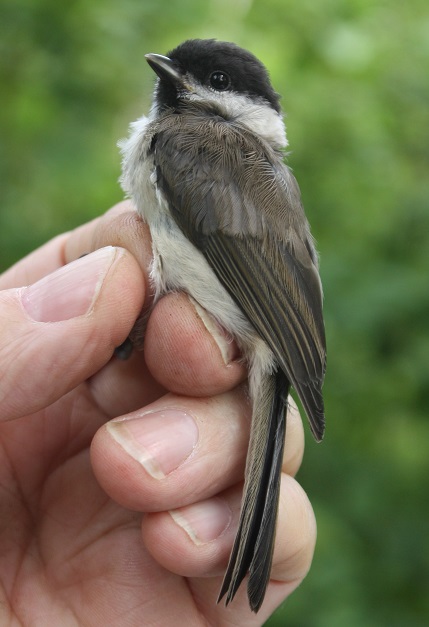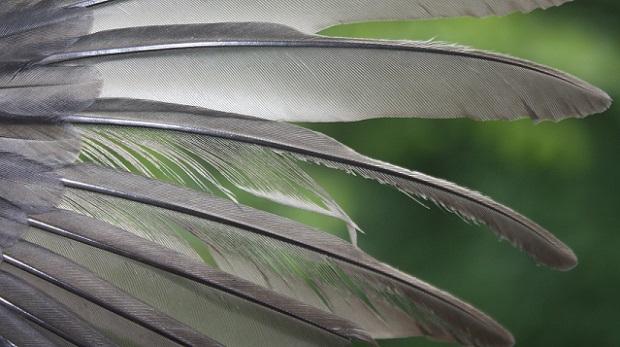Ellie and I did the May coppice project session at Ravensroost this morning. It was an interesting catch: highlights had to be newly-fledged Coal and Marsh Tits:


Also, a retrapped female Willow Warbler with a fully functioning brood patch, indicating breeding on the site, was a good find. We caught two additional Garden Warblers: a male and a female with a brood patch. The male's wings and tail were so pristine that I wondered whether it was a juvenile - but it would have had to have broken all early breeding records to be so. Perhaps it has had an abnormal post-migration moult.
As well as these, we had an enormously long-winged male Blackbird, with a wing length of 143mm: 2mm longer than the recording software was happy with. We recognied it was very long, so the measurement was checked three times. One of the other Blackbirds, LC08587, was ringed as a juvenile on the 27th December 2010, making it a seven year old bird, which is over twice the typical lifespan of a Blackbird (3 years) but less than half the age of the oldest recorded (14 years 9 months and 15 days). Talking of old birds, we also retrapped a Marsh Tit, D056635, only the second Marsh Tit colour-ringed at Ravensroost (by 2 minutes) on the 13th October 2012, making it a minimum of 5 years old, against a typical lifespan of 2 years but, again, half that of the oldest on record (11 years and 3 months).
The list for the day was: Coal Tit 5; Marsh Tit 1(2); Long-tailed Tit (2); Wren 2(1); Dunnock (1); Robin 5(5); Song Thrush 1; Blackbird 4(3); Blackcap 2(5); Garden Warbler 2; Chiffchaff (2); Willow Warbler (1); Bullfinch 3. Totals: 25 birds ringed from nine species, 22 birds retrapped from nine species, making 47 birds processed from 13 species.
The Bullfinches ringed were all males: one female caught had to be released without ringing, as she was showing signs of Fringilla Papilloma Virus. Hopefully all of the other females are on the nest, brooding eggs or nestlings. One of the Blackbirds was showing extreme damage to some of its primary feathers: a bad case of feather mite:

All in all, it was a good session and an interesting catch.
There were several dog walkers on the reserve, all of whom had their dogs on leads. However. one of them clearly took exception to my sign explaining why their dog should be on a lead and what we are doing on the site, as they stole it. Perhaps they loved my purple prose. ST/EJ
